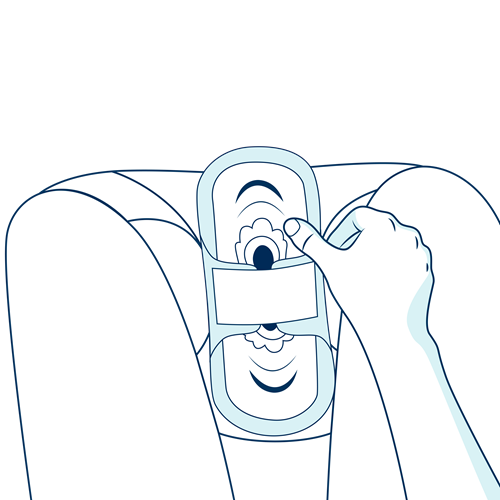Using pads is all about choosing the right product and feeling comfortable. Let’s go through everything you need to know—from putting on a pad properly to keeping things fresh and comfortable throughout the day.
If you want to know how to use pads without them feeling uncomfortable or detaching from your underwear, you’re in the right place.
It’s a simple 4-step process: unfold the pad, stick it to your underwear and change it every couple of hours.
But even if you’ve already learnt these steps, there are still a few tips and tricks to make using pads an even better experience. Gone are the days of unexpected leaks and chafing!
Pads come in different shapes, sizes, and thicknesses. Some are thicker for heavier flow, while others are thinner for lighter days. You might prefer an ultra-thin pad that feels light or a maxi pad for extra soft cushioning. The best way to know what works for you is to try different ones and see what feels most comfortable.

Using the tab on the outer wrapper, gently open and fold the pad out flat.

Peel the pad away from the wrapper and backing strip, the back of the pad should now feel sticky.

It helps to line up the centre of the pad with the little pocket (gusset) in your underwear. For long or night pads, the wider section can be placed at the back of your underwear for extra leakage protection.

Remove the centre tab and then fold the wings around and underneath your underwear, this will hold the pad firmly in place and keep it extra secure.
Position it right – Make sure the pad sits in the middle of your underwear so it catches everything properly.
Wear the right underwear – Pads work best with snug-fitting, cotton underwear (classic briefs or shorts-style). Avoid thongs or loose-fitting underwear, as they won’t hold the pad in place properly.
Change regularly – You should change your pad every few hours, even if it doesn’t seem full. This keeps things fresh and prevents leaks.
Check-out our Video on how to position pads the right way!
During the day, pads should be changed about every 3-5 hours, depending on how heavy your flow is. At night, you can wear a pad for up to 8 hours or longer, but make sure to use one designed for overnight use, like Lil-Lets Long or Night Pads, for extra protection.
Even if your flow is light, it’s important to change your pad regularly to prevent any irritation or odour.
Wrap up your used pad in toilet paper or its wrapper and throw it in the bin. Never flush it down the toilet, as it can cause blockages.
Yes! Pads usually have an expiry date printed on the packaging. They last about 4-5 years if stored in a cool, dry place.
Using expired pads isn’t a good idea, as the adhesive tape at the back of the pad may no longer be sticky enough to stay put in your underwear.
People typically use 4-5 pads in a day. It depends on their flow and the absorbency level of the pads being used. Nevertheless, you might use more pads if you’re going to be doing heavy exercise and sweating more.
Sanitary pads as we know them today were invented by Mary Beatrice Kenner, an African American inventor. She received a patent for her comfortable and discrete pad design in 1988.
Sanitary pads can cause yeast infections if you do not change them regularly throughout the day. Poor menstrual hygiene can create a moist environment in the pad for fungus and bacteria to grow.
Pads can cause pimples in some cases. If you use the same pad for a long time during menstruation, it can lead to rashes and chafing, which sometimes results in the development of pimples and other skin breakouts. This is especially problematic for people with sensitive skin.
Pads can increase the risk of a UTI if they aren’t changed frequently. To reduce the risk of UTIs, it is recommended to change pads frequently, wear loose-fitting clothing, and practise good hygiene.